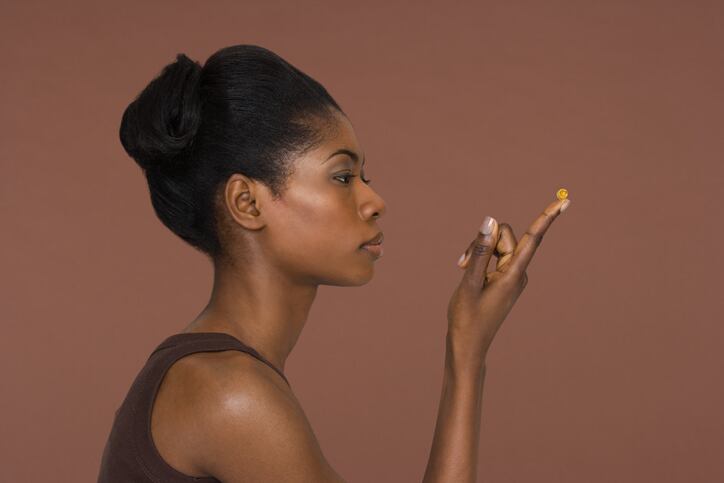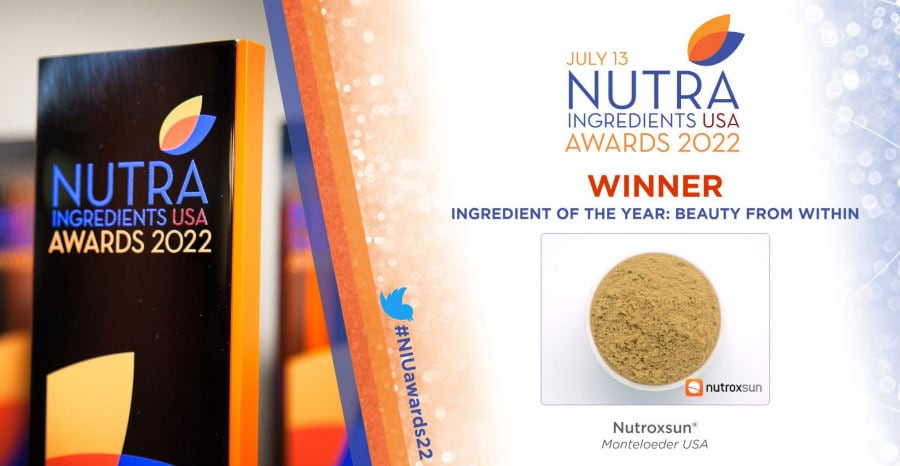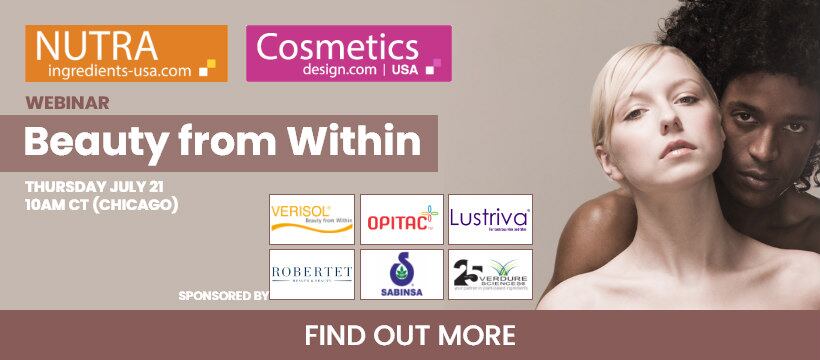Inclusivity
“Something important I think we should keep our eye on in ingestible beauty is how it's filling in inclusive beauty gaps in topical beauty spaces. Obviously, anti-aging is an area where there's a lot of missing research in the US for people with darker skin tones and I've heard a lot of people from researchers to brands talk about using ingestible beauty to fill in those gaps,” noted Ravyn Cullor, Editor, CosmeticsDesign-USA.
Indeed, Lycored, manufacturer of carotenoid ingredients for ingestible skincare, surveyed 1,285 consumers in the US and UK and asked them to define their skin tone in one of five categories (dark brown or black; brown; light brown; white – darker; and white – pale or fair).
When asked which skincare goals they wanted to achieve, consumers with the darkest skin tones were significantly more likely to select healthy glow/radiance. This was a goal for 67% of Americans with dark brown or black skin, compared to 51% of those with pale or fair skin.
Meanwhile, people with the lightest skin tones were the most likely to seek protection from UV light. In the UK, this was a goal for 34% of respondents with pale or fair skin, compared to 17% of those with dark brown or black skin tones.
In the US, 73% of consumers who defined their skin as dark brown or black had purchased a product designed for their particular skin tone, as had 54% of those with white skin.
Furthermore, the research suggests that products that do not target particular tones and colors like ingestible beauty are appealing to consumers. Three quarters of Americans surveyed agreed with the statement: “Products that provide the same benefits for people of all skin tones offer a platform for inclusivity.”
Getting personal
Technological advancements in personalized beauty products are expected to boost the market and capture new consumers soon. The application of artificial intelligence for testing, discovery and customization will also increase collaboration amongst brands, consultants and retailers through data sharing and inventory pooling, according InsightAce Analytic. Per the company's latest research report, the global next-generation personalized beauty market was valued at $41.9 Billion in 2021 and it is expected to reach $143.6 Billion by 2030, with a CAGR of 15.3% during the forecast period of 2022-2030.
“The whole idea of personalization, whether it's tied to personalizing because of the microbiome, personalizing depending on the life stage or whether it's pre or post pregnancy, pre or post menopause, or the age of the customer. Also personalizing by gender and personalizing by just the sheer diversity that Ravyn was just nodding to. I think when you talk about the customers looking for very specific solutions, they're looking for something that fits them. So the idea of personalization and the research that is being done right now to support that idea is what I would like to keep my eye on,” said Sudipta Veeramachaneni, Vice President and Chief Science Officer, GNC.
“I would totally agree on the personalization and the environmental impacts and what it has on beauty. So epigenetics, nutrigenomics, collagen boosters...moving beyond collagen, so some synergistic ingredients that work well to fortify and strengthen the skin, hair and nails,” said Paula Simpson, Innovation, Product Development & Branding Consultant, Nutribloom Consulting.
Beauty and the box
Consumers are demanding less packaging and brands are listening. Whether it’s reducing the total amount of packaging, using more recyclable materials or using reusable packaging, the beauty industry is listening as more and more brands increasingly turn to plastic alternatives. Beyond the packaging, consumers are also looking to replace polluting ingredients and chemical processes with more sustainable, biological alternatives.
The biotech boom
According to Simpson, ingestible trends like toward body contouring and minimizing cellulite are becoming more mainstream. On top of those trends, she's also seeing biotech: “So kind of a hybrid between eco-conscious and sustainability with biotech. I'm seeing a lot of algae companies coming out with finding sustainable ingredients to help with not only food supply but also with ingestible beauty.”
Science in style
Traditional medicines such as Ayurveda, Kampo, traditional Chinese medicine and Unani have been practiced for thousands of years across the globe, yet they are only recently making their way into products in the US. While we are only at the tip of the iceberg in terms of existing plant species that have been scientifically researched for bioactivities, natural products and traditional medicines have already made fruitful contributions.
“I think that obviously, there is going to be a push for efficacy and for science. And I'm also looking at traditional medicine growing more and more into supplements,” said Giorgio Dell’Aqcua, Chair, New York Society of Cosmetic Chemists. “Now I think brands are really learning more about these phytochemicals and what they do. Phytochemicals have been studied for thousands of years all over the world with strong, strong evidence from China, from India, from Europe, from different regions. And now we read those publications and we know that they have the potential and we want to use them here in the Western world. We are so into drugs, into vitamins, and I really hope that there is going to be a trend growing on phytochemicals with the lesson of traditional medicine and what they do and more studies to be done and to grow that knowledge–I think that could be very interesting for the industry.”




